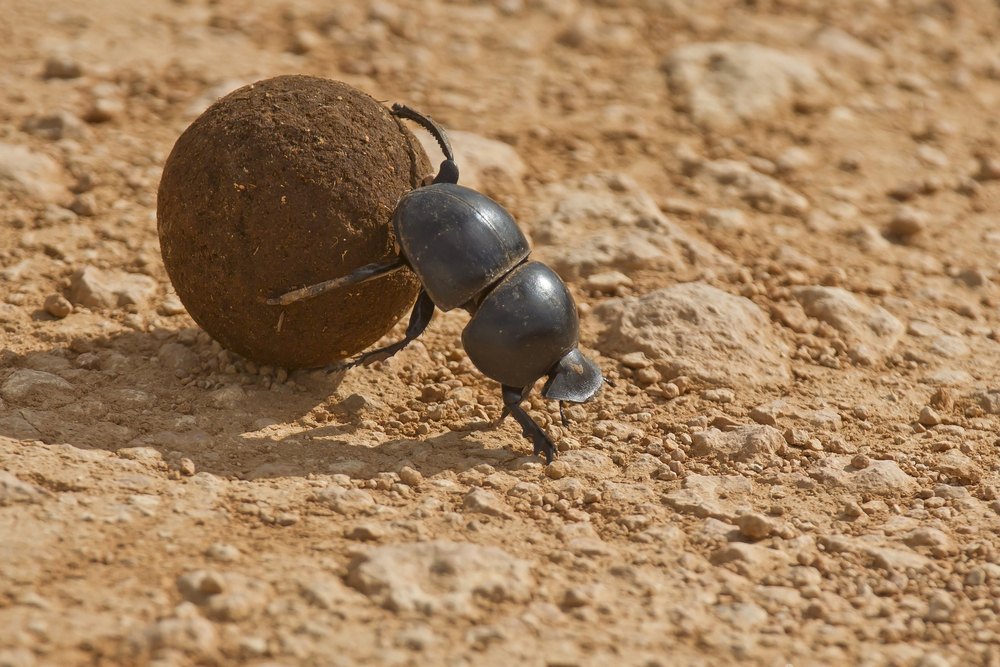
Dung beetles take snapshots of the sky and use the mental images to navigate, a new scientific study has revealed. And, according to researchers in Sweden, not only do the little manure-munching insects have the capability of accurately scanning the position of the sun, the moon and patterns in the stars—they memorise the map while prancing around on poo balls.
Thousands of species of dung beetle exist all around the world, but the most well-known are found in Africa, where they tidy up after some of the globe’s biggest mammalian dumpers. Even in the dark domain of insects, these creatures have one of the least glamorous roles in all of nature—they clean up other creatures’ crap, typically by rolling bits of delicious dung into balls and scurrying away with it, to escape any potential competition. These balls are then buried, with the beetles returning to the scene later, to feast on the faeces or to use it to nourish their larval offspring.

It’s dirty work, but someone has to do it, and the methods employed are way more sophisticated than you might expect. The beetles need to know where they’re going in order to hide the stinky stash in a good spot, and then they have to be able to find it again, so reliable navigation is crucial. Authors of the new study, published in the journal Current Biology, maintain that the crafty creatures can tell exactly where they are by comparing their current position to stored snapshots of the sky, taken while rolling their prize poo balls along.
Previous studies have hinted at the dung beetles’ ability to use the Milky Way to find their way, but the new research reveals that they can also hold onto memories of what they’ve seen, and use these memories to map where they are.
Scientists conducted tests on the insects at a facility in South Africa, which has an artificial sky where light levels and the location of various bodies in the sky can be controlled and altered. They discovered that dung beetles could detect many things that human eyes can’t, including polarised light and the spectral gradient of the sky. With this high-tech toolkit, the beetles are able to use multiple celestial cues and clues, so they’re not reliant on just one object in the sky, like the sun.

According to Lund University’s Dr Basil El Jundi, who led the study, the imaging takes place while the beetles perform an apparent ‘dance’ atop their balls of brown bounty, rotating around their vertical axis. ‘In that situation they scan the sky and take a mental image of what the sky looks like,’ he told the BBC. ‘When they start rolling they try to match the actual visual scenery of the sky with the mental image they have stored before. And that brings them away in a straight line.’

It’s not the first time animals have been credited with the capability of using celestial signposts to find their way around. Numerous migratory birds are believed to use imprints of the sun and certain stars to negotiate vast distances across featureless oceans, and seals have also been known to use stars to steer. However, this is the first time such advanced techniques have been proven in an insect. Ants are thought to take snapshots too, but only of their immediate surrounds (ants’ eyesight is notoriously terrible), which is a far cry from mapping the sky.
Researchers believe that, in future, the dung beetles’ gnarly navigational skills could even be used to help develop driverless vehicles.
